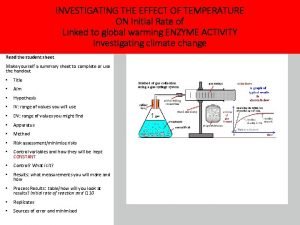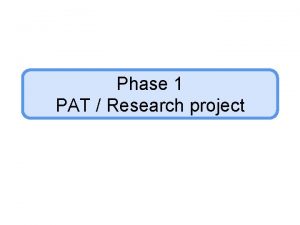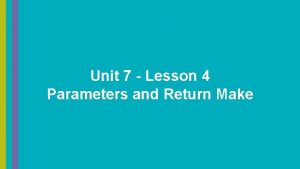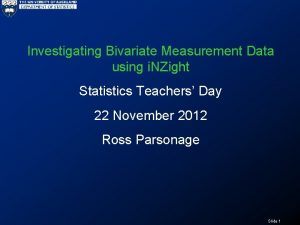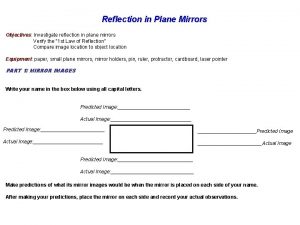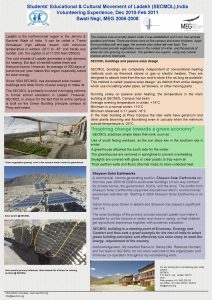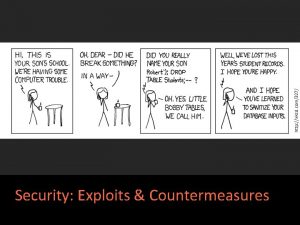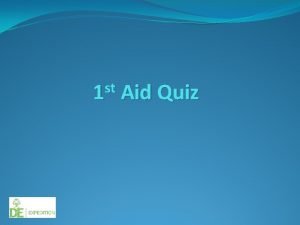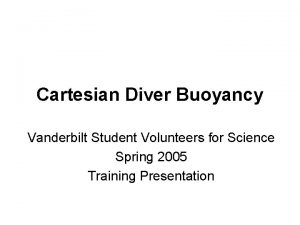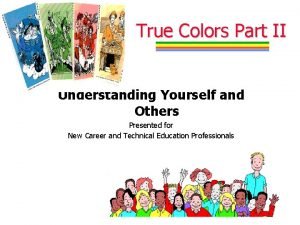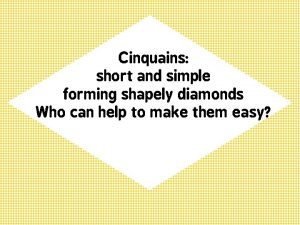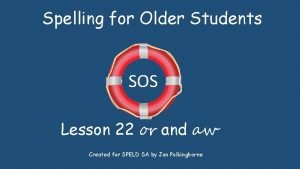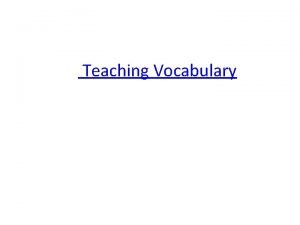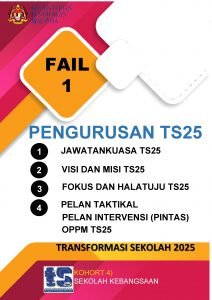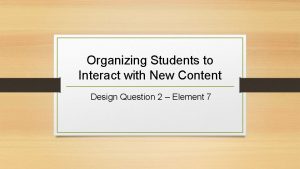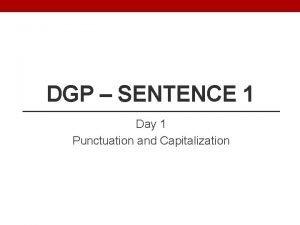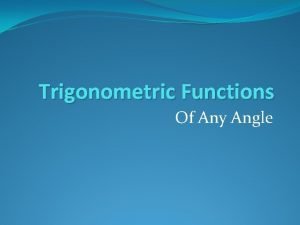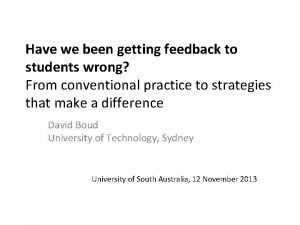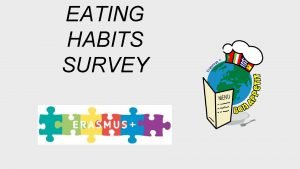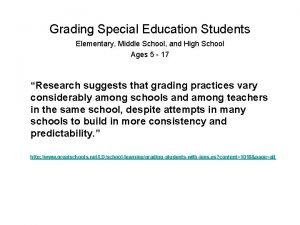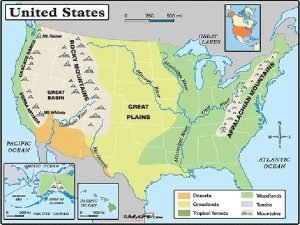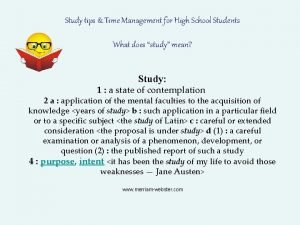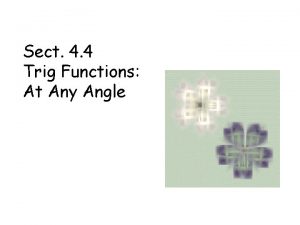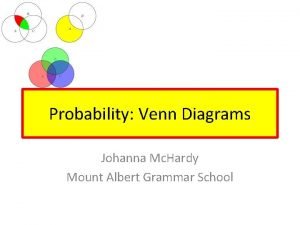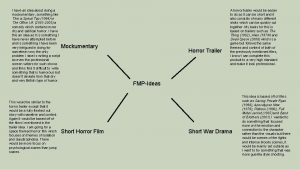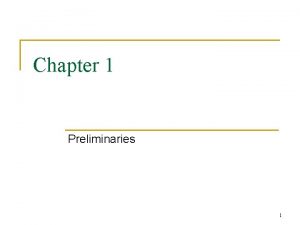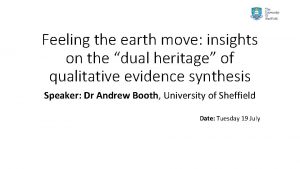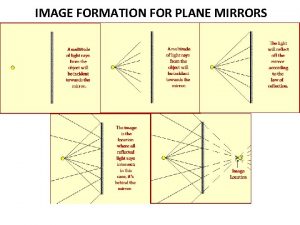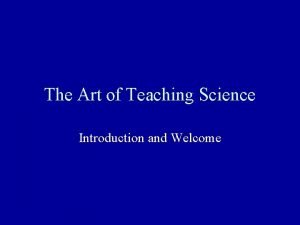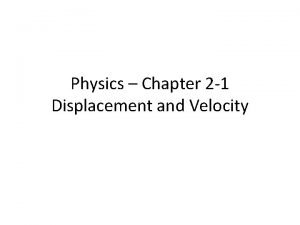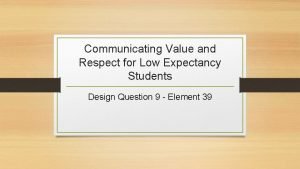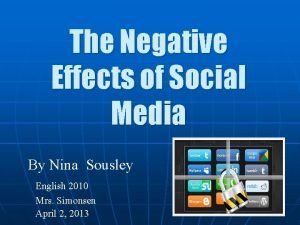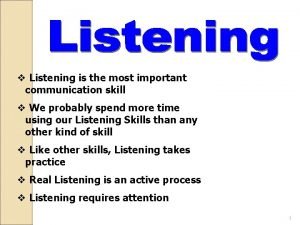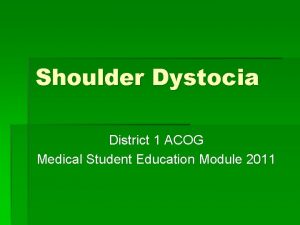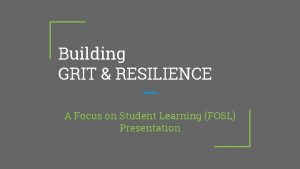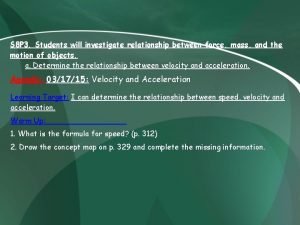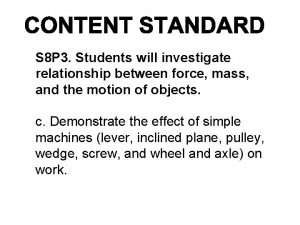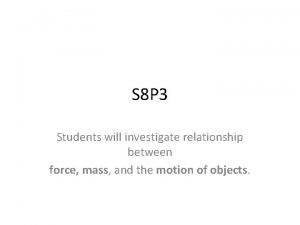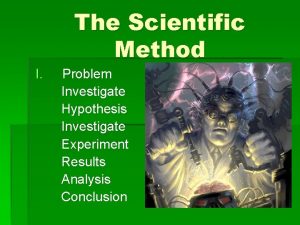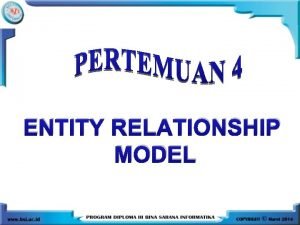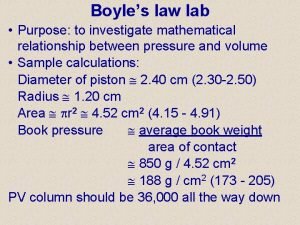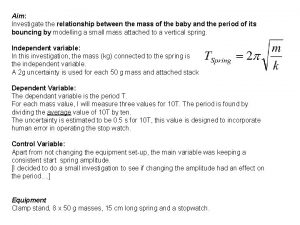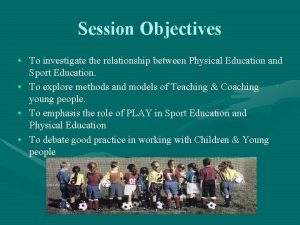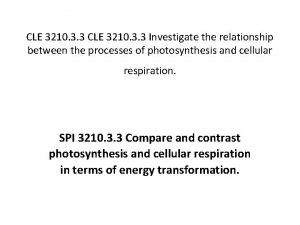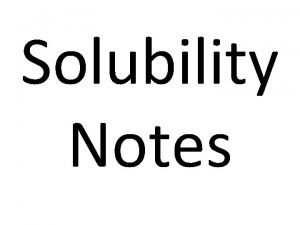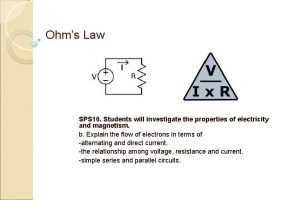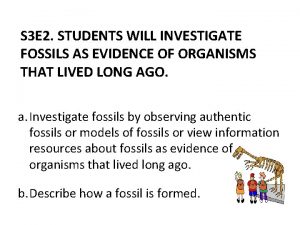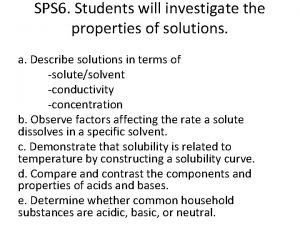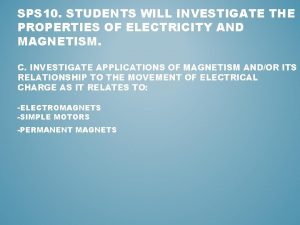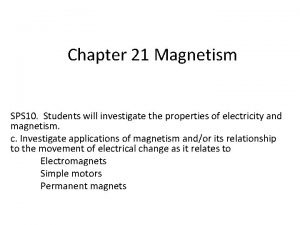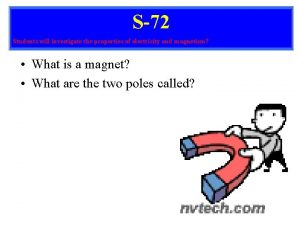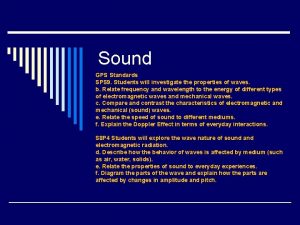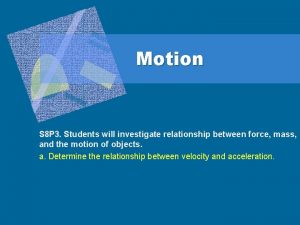S 8 P 3 Students will investigate relationship

































































































- Slides: 97

S 8 P 3. Students will investigate relationship between force, mass, and the motion of objects. UNIT 4: FORCE

Unit 4: Force S 8 P 3. Students will investigate relationship between force, mass, and the motion of objects. EQ: What is velocity and acceleration? EQ Answer: P. 89

LG 1: I will be able to compare, contrast, and calculate speed, velocity, and acceleration. I will understand force and apply Newton’s Laws in real-life situations. LG 2: I will be able to compare, contrast, and calculate speed, velocity, and acceleration through word problems. I will use Newton’s Laws in real-life situations through problem-solving. LG 3: I will be able to compare, contrast, and calculate speed, velocity, and acceleration through word problems and graphs. I will use Newton’s Laws in real-life situation through problem-solving by using graphs.

Motion – occurs when an object changes position relative to a reference point. A Reference Point is something you use to determine the position of an object, but the reference point has to be something that doesn't move. Draw this

Distance Vs. Displacement Distance – how far an object has traveled Displacement – distance and direction of an objects change in position from starting point.

W

Speed – the distance an object travels in a certain amount of time. Average Speed = total distance total time s=d t

There are 3 types of speed: Instantaneous Speed – speed at any given point in time Ex. Driving a car and looking down at the speedometer.

Average Speed – total distance traveled divided by total time Ex. Taking a road trip Constant Speed – Speed that does not change Ex. Putting car in cruise control

Velocity – includes speed of an object and the direction of its motion. (Speed + direction) Check This out! https: //www. youtube. com/watch? v=m. Dcae. O 0 Wx. BI

Speed Vs. Velocity Speed Velocity

Acceleration occurs when an object changes speed, its direction, or both. Acceleration – rate of change of velocity. Acceleration = change in velocity time a = final velocity – initial (starting velocity) time

It is possible to have a positive and negative acceleration! Positive Acceleration – A plane takes off Negative Acceleration – A bike comes to a stop

Calculating Speed, Velocity, and Acceleration Follow these steps when working out a formula/word problem: 1. Read the problem 2. Circle what they are asking for 3. Find the formula you use 4. Write the formula 5. Plug in the numbers P. 93

Formulas: Speed S=d t Velocity v= d t Acceleration a = v(f)-V(i) t

1. Distance: 25 m Time: 5 seconds 2. Time: 30 seconds Speed: 7 m/s 3. Speed: 5 miles/hr Distance: 45 miles

Sam is on his way to his friends house. He lives 20 miles away and he needs to get there in 5 minutes. What speed should he go to make that happen?

� Juan stands at the starting line of a race track. He leaps forward as the starting gun blasts, and runs straight toward the finish line. When he crosses the finish line 2 seconds later, he is clocked at 9 meters/second. How many meters did he run?

Kristy wants to ride her bike around the block going 2 miles/hour. From her driveway and back is 8 miles. How long did it take her to ride her bike?

Jim decides to take a road trip. His house to Atlanta is 420 miles. He wants to get there in 7 hours. How fast should he go to make it there in time?

� Initial velocity: 20 m/s final velocity: 60 m/s time: 2 s

Good Morning! � Pick up the worksheet with a circle on it and cut it out.

Speed

Distance

Time

When solving a problem Read the problem Circle what it is asking for Find the formula Write the formula Plug in the numbers

A car travels along a road at a steady speed of 60 mph. How far will it travel in 6 hours?

A train covers a distance of 480 miles in 8 hours. If it travels at a constant speed, how fast is it traveling?

John walks at a steady speed of 3 mph. How long will it take him to travel 24 miles?

A car travels at a constant speed of 65 mph. How far will it have traveled in 4 hours?

Melanie completes a long distance run at an average speed of 6 mph. If it takes her 3 hours, how far did she run?

Sarah cycles 30 miles to her grandmother’s house at a steady speed of 10 mph. If she leaves home at 2: 00 P. M. , what time will she arrive?

Quiz

Acceleration EQ: What does velocity and acceleration have in common? EQ Answer: P. 99

Acceleration can be positive or negative. Acceleration – rate of change of velocity Formula: A= final v – initial v t

These graphs show the change in velocity/speed. Remember that velocity and speed have the same formula except velocity includes direction. *** The line is speed/velocity.

Foldable Practice A Graph Glue here Positive Practice B Graph Glue here Negative

Positive Flap: Distance increases as time increases. The car traveled on I-16 heading West (velocity). When the car pulled on the on ramp, the car was traveling 45 mph. In 1 hour the car was traveling at 75 mph. What was the acceleration?

Negative Flap Distance decreases as time increases. The car sees a stop sign up ahead when the car is traveling North (velocity). The car is traveling at 25 m/s. In 5 seconds, the car is stopped. What is the acceleration?

Force EQ: What is force? EQ Answer: P. 101

Force – A push or pull applied to an object Net Force – when two or more forces act on an object at the same time. Only when forces are unbalanced is when an object moves!!!!

A balanced force is where the both forces applied are equal!

An unbalanced force is where forces are unequal.

Today we will be creating two comic strips. Once on balanced forces and the other on unbalanced forces. Lets review: https: //www. youtube. com/watch? v=K 3 S 6 WKJIohw https: //www. youtube. com/watch? v=Csg. GZ 4 Ej. Wo. M

Your descriptions should answer these questions: What is your comic strip about? How did you come up with this example? Why is it balanced/unbalanced force? Please include these key words: Force Net Force P. 103

Friction EQ: What are the four types of friction? EQ Answer: P. 104

Friction – the force that opposes the sliding motion of two touching surfaces. There are 4 types of friction: static, sliding, rolling, and fluid. https: //www. youtube. com/watch? v=MAqr. Wvk. Bo. Hk

Type of Friction Description Example Static Friction in which two surfaces are not moving past each other. Sliding Friction where two surfaces slide past one another. Sledding down a hill Rolling Friction between a rolling object and surface it rolls on. Skateboard moving on ground Fluid Friction when object moves through fluid, meaning either a liquid or gas. Skydiving

Air Resistance – friction-like force that opposes motion of objects that move through air. With air resistance, depends on speed, size and shape of object.

Cut out the pictures…. � Look at the pictures and try to figure out which picture belongs to what type of friction. � DO NOT GLUE!!!!!!!!

Friction Foldable Take the paper and make a sailboat and cut off the extra Then fold corners in.

Static � Two surfaces not moving past each other.

Sliding � Two surfaces slide past one another.

Rolling � Occurs when an object rolls over another � (something is round) with wheels or an object that

Fluid � Occurs when object moves through a fluid, either a liquid or gas. � (anything in water and sometimes through gas)

Friction Labs � Walk through every lab with your partner and answer the questions on your lab sheet! � When you are done, I want you to go back to your desk and give me examples of each type of friction from your own life.

Come on in… Please fold paper and glue on p. 107 Read and highlight key sentences in article.

Gravity – any two masses that exert a force on each other Gravity depends on mass and distance between objects. P. 108

Weight – gravitational force exerted on an object. The greater the objects mass, the stronger the gravitational force on it. (The bigger the object, the more gravitational force on it)

1 st Law of Motion EQ: What is the 1 st Law of Motion and what does it mean? EQ Answer: P. 109

Sir Isaac Newton is a very well known scientist. He created the 3 Laws of Motion. This is why we measure force in Newtons. Inertia – tendency of an object to resist any change in its motion.

Newton’s First Law of Motion (AKA Law of Inertia) An object in motion stays in motion, or an object at rest stays at rest until an unbalanced net force acts upon it.

WAIT… WHAT…? ? That means that an object will keep moving until a force changes that or an object will stay at rest until a force changes it.


Experiment: We are going to put an index card on a cup with a penny on it. Hypothesis: (What do you think will happen to the penny on top? )

Conclusion: (In your words, what did your penny do? Was your hypothesis right or wrong? ) Draw the experiment:

Good Afternoon! � Please come in and reread the article on page 107 � You will be tested on this article. Review: https: //www. youtube. com/watch? v=px. WHWOYVov 4

POP QUIZ! �I will give you five minutes to study!!! Please use it.

WORD BANK ONLY FOR WORDS 1 -4 Rolling Static Sliding Fluid +10 Points BONUS: What is the first law of motion?

2 nd Law of Motion EQ: What is the 2 nd Law of Motion and what does it mean? EQ Answer:

Newton’s Second Law of Motion A net force acting on an object causes the object to accelerate in the direction of the force. Acceleration is determined by amount of force and the mass of an object.

Formula: Force = mass X acceleration F=m X a

WHAT DOES THIS MEAN? ? It means that the heavier/more mass the object has, the more force you have to use to make it accelerate. https: //www. youtube. com/watch? v=n. O 7 Xe. YPi 2 FU

Experiment: We have two water bottles the same size. One will be completely full while the other will be half full. We will pull both objects with the same force. Hypothesis: (Which one do you think will move faster? )

Conclusion: (Why did one move faster than the other. Use the 2 nd Law of Motion) Draw the experiment under your conclusion. https: //www. youtube. com/watch? v=iw. P 4 he. WDhvw

Good Afternoon! Please come in and reread the article on page 107. You will be tested over this.

3 rd Law of Motion EQ: What is the 3 rd Law of Motion and what does it mean? EQ Answer:

Momentum – property of moving object resulting from its mass and velocity. Momentum (p) = mass X velocity

Newton’s Third Law of Motion For every action (or force), there is an equal and opposite reaction (of force). https: //www. youtube. com/watch? v=MUg. FT 1 h. RTE 4


Experiment: We are going to put a straw in a balloon and blow the balloon up with air. We will tape the balloon to a car and let the air out. Hypothesis: (What do you think will happen to the car when we let the air out? )

Conclusion: (What did happen to the car and why? Include the 3 rd Law of Motion in your answer. ) Draw the experiment. https: //www. youtube. com/watch? v=_sr 3 h. Bxu 614

https: //www. youtube. com/watch? v=px. WHWOYVov 4 How does this video show the 1 st Law of Motion and the 3 rd Law of Motion? ? ? Answer in complete sentences.

Newton’s Laws Foldable

Laws of Motion Project Pick which Law of Motion you would like to work on (1 st, 2 nd, 3 rd) You have to include information about: Isaac Newton The actual Law of Motion What does it mean in your own words 4 -5 Picture examples

Good Afternoon � Come desk. Voice Level =0 on in and read the article on your

Balanced and Unbalanced Forces EQ: What is a balanced and unbalanced force? EQ Answer: (Skip 3 lines)

Net Force – two or more forces acting on an object at the same time.

Balanced Force – is an equal force but in opposite direction. NO CHANGE IN MOTION!!!!! Net force = 0


Unbalanced Force – a force is greater than the others put on an object. Net force = Positive #


Draw this in notebook: Balanced Unbalanced

Cut out the pictures an place them in the right category. BEFORE YOU GLUE, RAISE YOUR HAND TO LET ME CHECK!!!!!!

Balanced Unbalanced

Give an example of a balanced force in your life: Draw a picture:

Give an example of an unbalanced force in your life: Draw a picture:
 Finding initial rate of reaction
Finding initial rate of reaction How to investigate a problem
How to investigate a problem Lesson 4 parameters and return make rock paper scissors
Lesson 4 parameters and return make rock paper scissors Bivariate measurement data
Bivariate measurement data Why is the priest doing this
Why is the priest doing this Investigate reflection
Investigate reflection Rizal's salute to luna and hidalgo summary
Rizal's salute to luna and hidalgo summary Healthy vs unhealthy friendship scenarios
Healthy vs unhealthy friendship scenarios Relationship management vs relationship marketing
Relationship management vs relationship marketing Plain folks propaganda
Plain folks propaganda Shop assistant good morning can i help you
Shop assistant good morning can i help you Plmar vision
Plmar vision Congratulations to my dear students
Congratulations to my dear students Students educational and cultural movement of ladakh
Students educational and cultural movement of ladakh Microsoft augmented reality for students
Microsoft augmented reality for students Xkcd drop table students
Xkcd drop table students Three ps in first aid
Three ps in first aid Bcspone
Bcspone Students
Students Green true colors
Green true colors Motivating students to learn english
Motivating students to learn english Simple machines poem
Simple machines poem Sos spelling for older students
Sos spelling for older students Seven principles of developing vocabulary
Seven principles of developing vocabulary Senarai semak fail ts25
Senarai semak fail ts25 Hello goodmorning
Hello goodmorning Grammar translation method pros and cons
Grammar translation method pros and cons Www.socrative.com/student login
Www.socrative.com/student login Students retention
Students retention Digital time capture
Digital time capture Organizing students to interact with new content
Organizing students to interact with new content Students union of serbia
Students union of serbia Personal statement examples for jobs
Personal statement examples for jobs Refinitive workspace
Refinitive workspace Define active citizenship
Define active citizenship Objectives of orientation
Objectives of orientation Many students work on the star our school newspaper
Many students work on the star our school newspaper School dropout survey questions
School dropout survey questions Rights and responsibilities of students
Rights and responsibilities of students All students take calculus
All students take calculus Constructive feedback examples for students
Constructive feedback examples for students Ode examples
Ode examples Dietary habits questionnaire
Dietary habits questionnaire Objective in research
Objective in research Grading special education students
Grading special education students Permanent english settlement
Permanent english settlement Time management tips for high school students
Time management tips for high school students Important point in work immersion
Important point in work immersion Mcps dekstop
Mcps dekstop Felipe surveyed students at his school
Felipe surveyed students at his school School plus app
School plus app Asvab occufind
Asvab occufind Good morning and welcome everyone
Good morning and welcome everyone History of deaf education
History of deaf education Activating students as owners of their own learning
Activating students as owners of their own learning Objectives of orientation program for students
Objectives of orientation program for students All students take calculus
All students take calculus Smc students with disabilities
Smc students with disabilities Summer project for bba
Summer project for bba Superburger sells hamburgers with the choice of ketchup
Superburger sells hamburgers with the choice of ketchup Site:slidetodoc.com
Site:slidetodoc.com World englishes a resource book for students
World englishes a resource book for students Good morning my lovely students
Good morning my lovely students Sampoorna students details
Sampoorna students details Mockumentary ideas
Mockumentary ideas Social media etiquette for college students
Social media etiquette for college students Symposium is a type of
Symposium is a type of Art supplies brand names
Art supplies brand names Thank you my dear students
Thank you my dear students Communication skills of senior high school students
Communication skills of senior high school students Aakash saw his sister's son's maternal aunts
Aakash saw his sister's son's maternal aunts Best introduction lines for students
Best introduction lines for students A research statement example
A research statement example What is a poetic device
What is a poetic device Trigo
Trigo Broad topic and specific topic examples
Broad topic and specific topic examples By the end of the lesson, students will be able to
By the end of the lesson, students will be able to What is drama/play
What is drama/play Qualitative research examples for students
Qualitative research examples for students Six students are arranged in front of a mirror
Six students are arranged in front of a mirror Students reflection on their learning sample
Students reflection on their learning sample Lords grace christian church
Lords grace christian church Displacement formula distance
Displacement formula distance Never work harder than your students
Never work harder than your students How many students does your school have
How many students does your school have Ok teacher
Ok teacher Demonstrating value and respect for low expectancy students
Demonstrating value and respect for low expectancy students St joseph prayer for exam
St joseph prayer for exam Social media negative effects
Social media negative effects Good morning, students
Good morning, students Multiple choice questions for primary students
Multiple choice questions for primary students Matthias benzer
Matthias benzer Communication skills jeopardy
Communication skills jeopardy Importance of listening skills
Importance of listening skills Research problem statement and objectives examples
Research problem statement and objectives examples Acog medical student
Acog medical student Building grit in students
Building grit in students Instructional adaptations for special needs students
Instructional adaptations for special needs students
